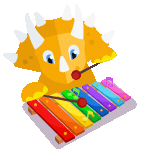Say How You Feel in Dutch: Happy, Sad, Excited & More
Feelings are one of the first things kids learn to express and learning them in Dutch helps young learners connect language with everyday emotions. From joy to frustration, these words are powerful tools for self-expression.
Why Feelings Words Are Great for Language Learning
Emotions come up daily. Teaching kids how to name them in Dutch helps them:
- Build emotional vocabulary and awareness
- Practice natural sentence building
- Feel seen, heard, and confident in using a second language
Basic Dutch Emotion Words for Kids
- Blij – Happy
- Verdrietig – Sad
- Boos – Angry
- Bang – Scared
- Moe – Tired
- Opgewonden – Excited
- Rustig – Calm
- Verlegen – Shy
These are perfect for morning check-ins, story time, or play.
Emotion-Based Learning Activities
“How Do You Feel?” Chart
Create a mood board with faces and Dutch labels. Ask: Hoe voel jij je vandaag? (How do you feel today?). Let kids move a clip to match their mood.
“Act It Out” Game
Say an emotion word in Dutch and let kids act it out or show a matching face. For example: Blij! (happy) with a big smile or boos! (angry) with crossed arms.
Dinolingo makes vocabulary like blij and moe easy to remember through visuals, repetition, and stories. Kids aged 2–14 explore Dutch while also learning to talk about themselves.
Final Thoughts
From big laughs to quiet moments, every emotion is a chance to grow and speak. With simple words and gentle guidance, Dutch becomes a language of the heart.
Source:
Start Learning a New Language Today!
Best Language App for Kids.
7-day free trial. Then only $19/month. Cancel anytime.
